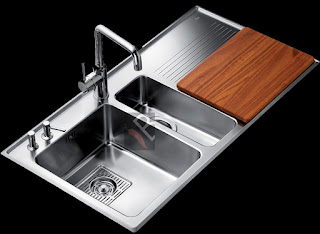Metro tiles are ideal for a kitchen splashback
Metro tiles are extremely popular these days and for good reason. They are relatively cheap, easy to install and can be used almost anywhere with good effect. One of the favourite places are behind stoves in the kitchen which serves as a splashback.
Metro tiles are ceramic tiles, they are thin so they cannot be used as floor tiles.
Metro tiles are available in two shapes, bevelled and flat. The most popular are the bevelled types because they create depth. The flat metro tiles are often used in bathrooms and braai areas as splashbacks. Both flat and bevelled metro tiles are available in black or white.
Ceramic tiles have a couple of advantages when used as a splashback, be it in the kitchen or bathroom (even around the braai area). They are glazed, which means fat, grease, oil or any other ingredient will not penetrate the top surface of the tile and cause staining. The top glazed layer is baked so it is extremely hard and will not scratch. Staining and scratching are two of the main problems found on other materials like stainless steel and crystal glass (not really a problem with toughened solid glass splashbacks, but it can scratch and you cannot get it out without industrial polishers).
Metro tiles are ceramic tiles, they are thin so they cannot be used as floor tiles.
Metro tiles are available in two shapes, bevelled and flat. The most popular are the bevelled types because they create depth. The flat metro tiles are often used in bathrooms and braai areas as splashbacks. Both flat and bevelled metro tiles are available in black or white.
 |
| A black bevelled metro tile used as splashback in a modern kitchen |
How many tiles do you need.
This is easy to calculate. You need approximately 88 tiles per square meter (1 square meter is a square with height 1m and width of 1m). I say approximately because it depends on the width of the grout that the tiler will use. In most cases the width is 2-3mm. This applies for both the flat and bevelled metro tile. The size of each tile is 75x150mm.
As with all tiles and mosaics, the grout must be sealed. The best way to prevent the grout getting dirty is to mix the grout with bonding liquid. this will seal the grout. The second step is after the grout has dried, to seal it with TLC Grout Sealer. Once the grout has been sealed, it should be easy to clean.
Always remember to buy extra tiles and put them away somewhere safe. If by accident you break a tile, or would like to do some alternations, you will have some tiles available from the same batch to replace.





Comments
Post a Comment